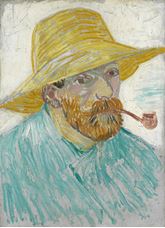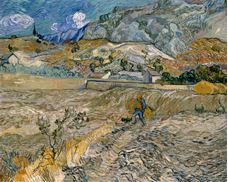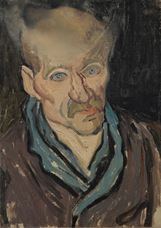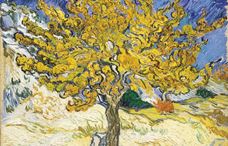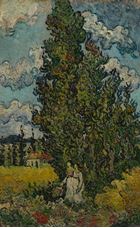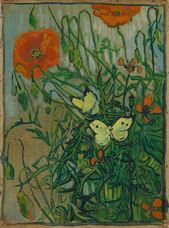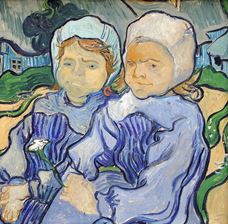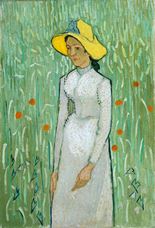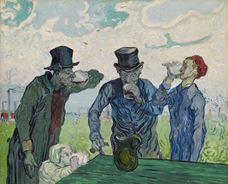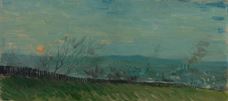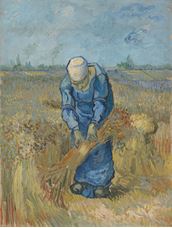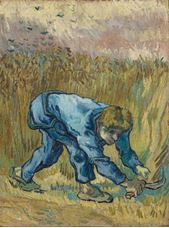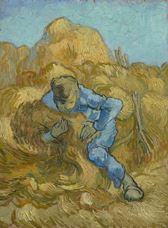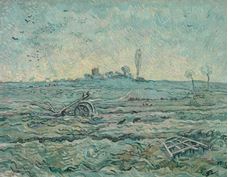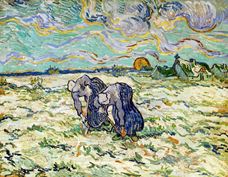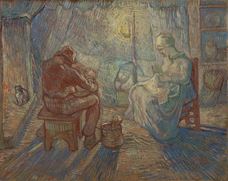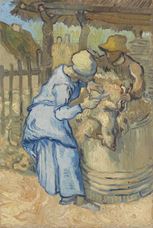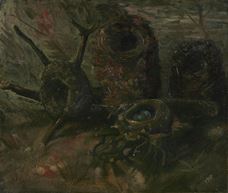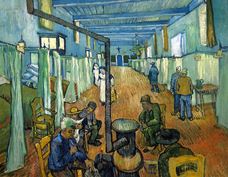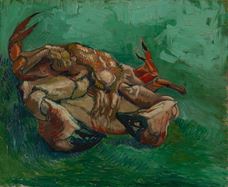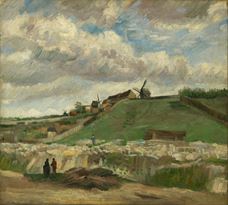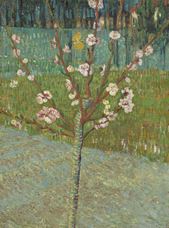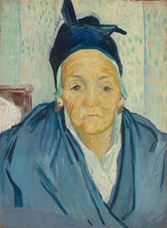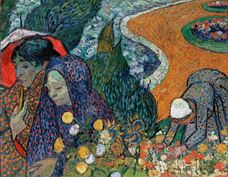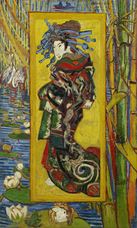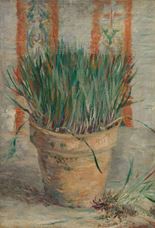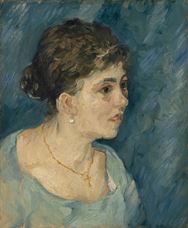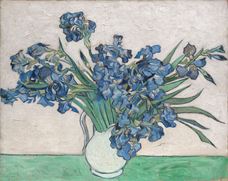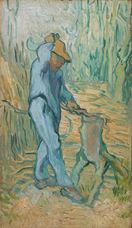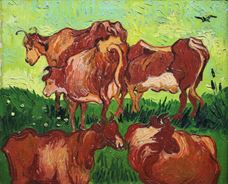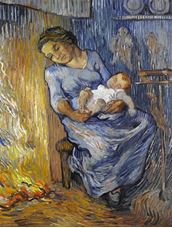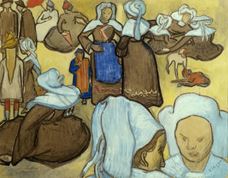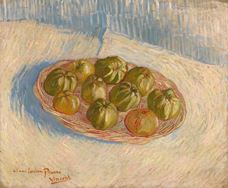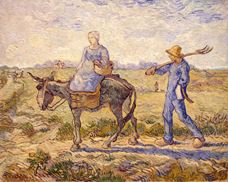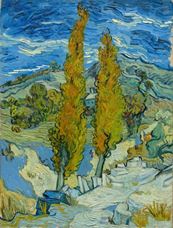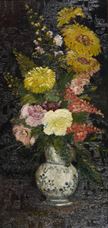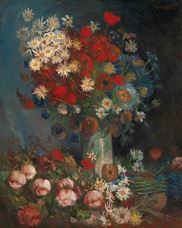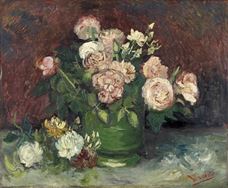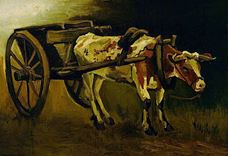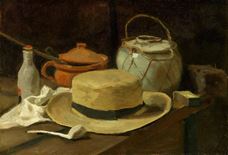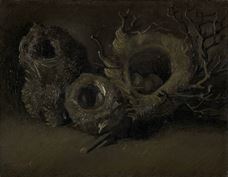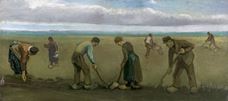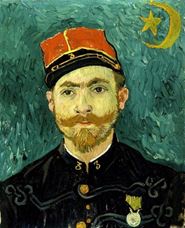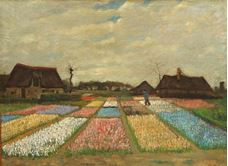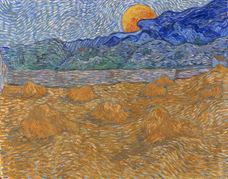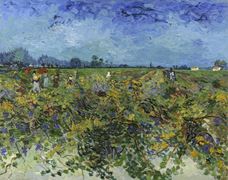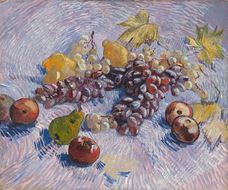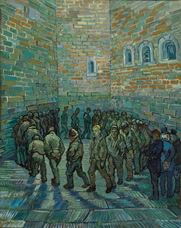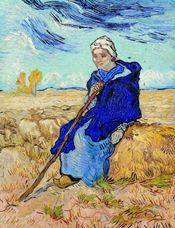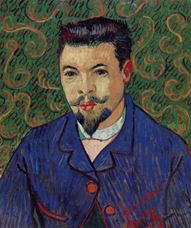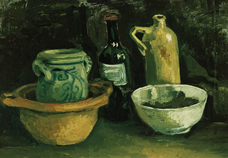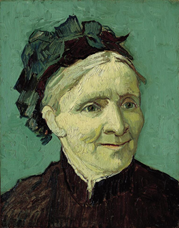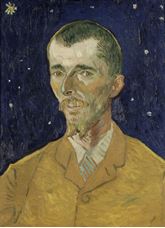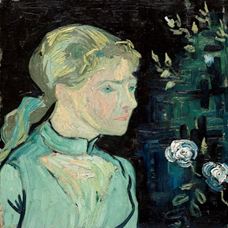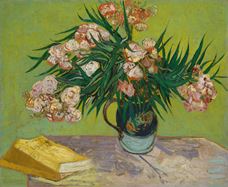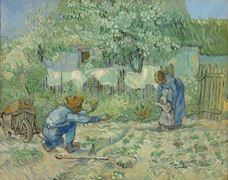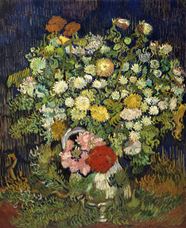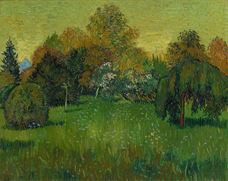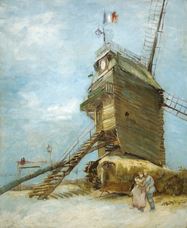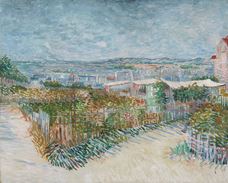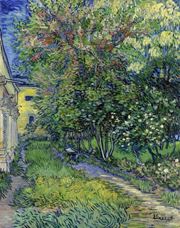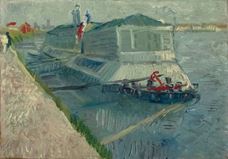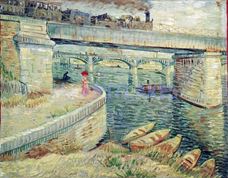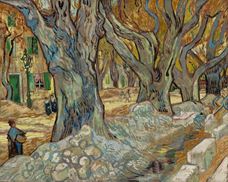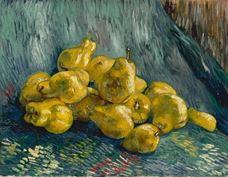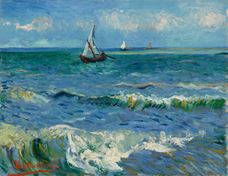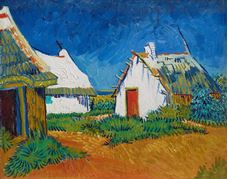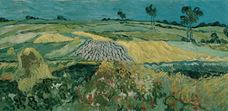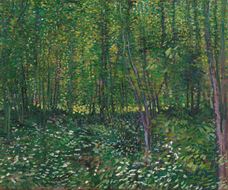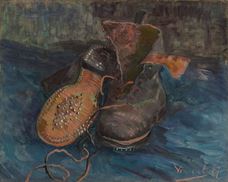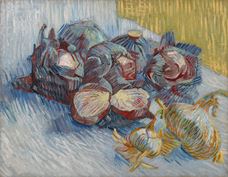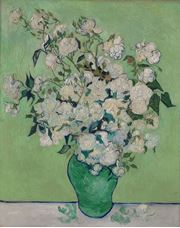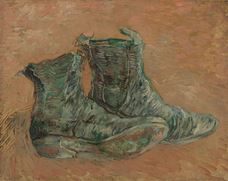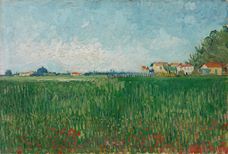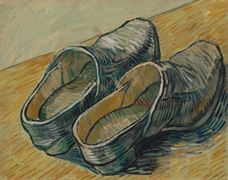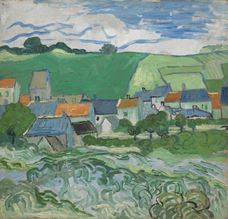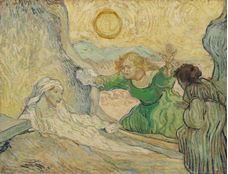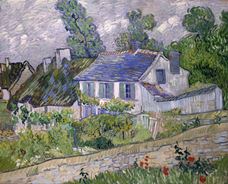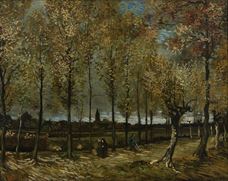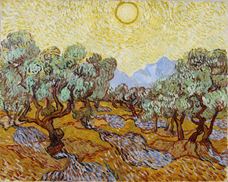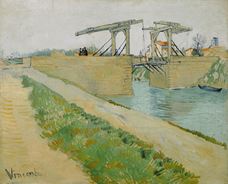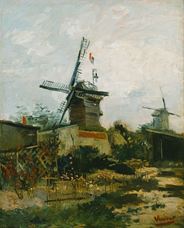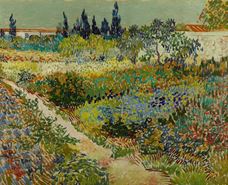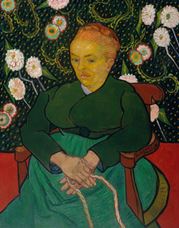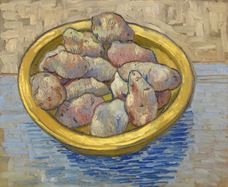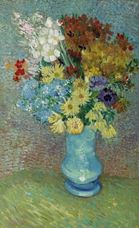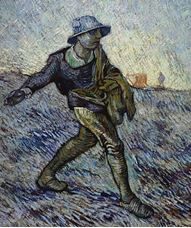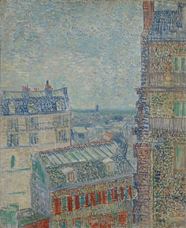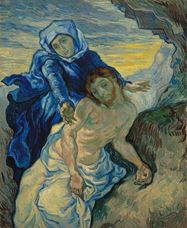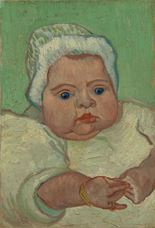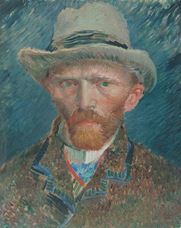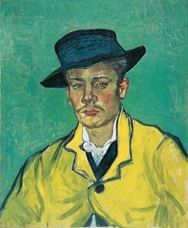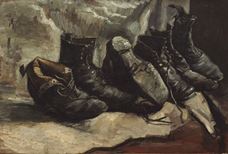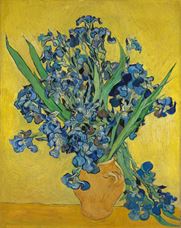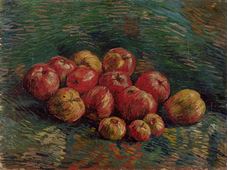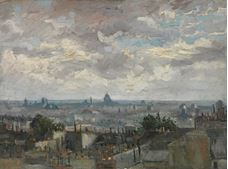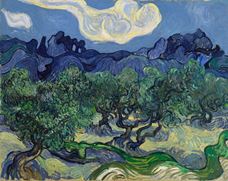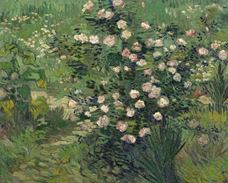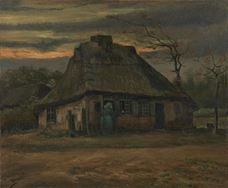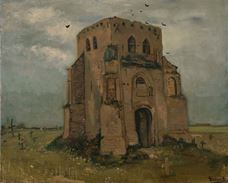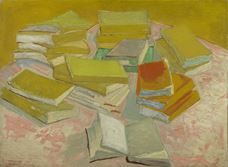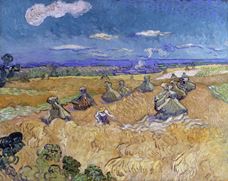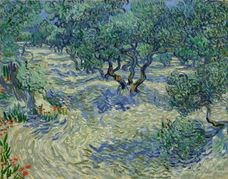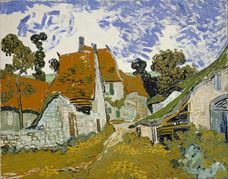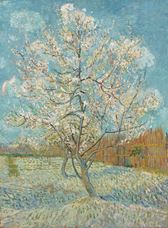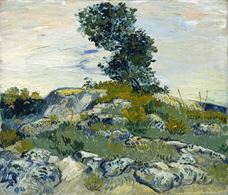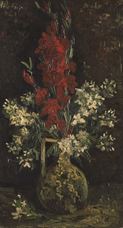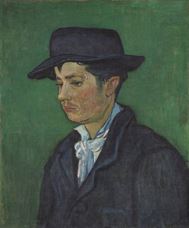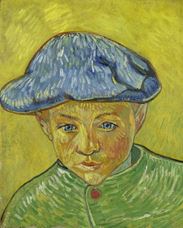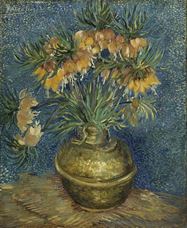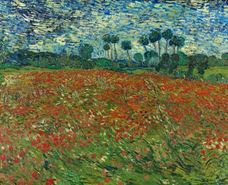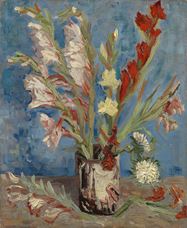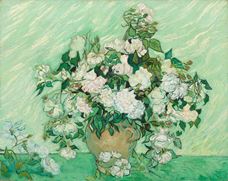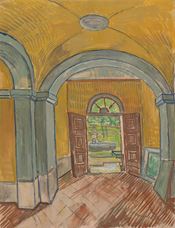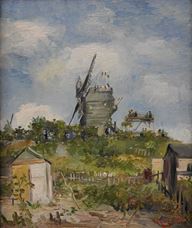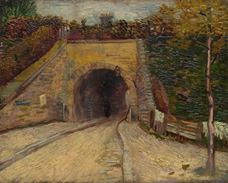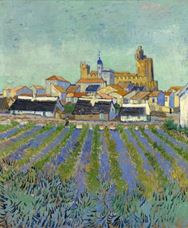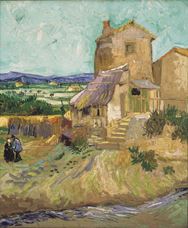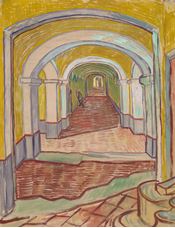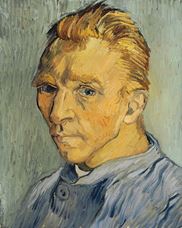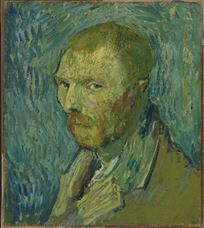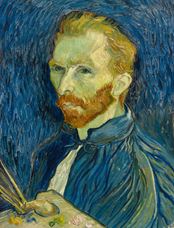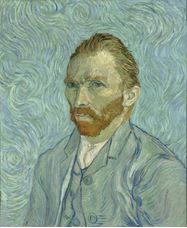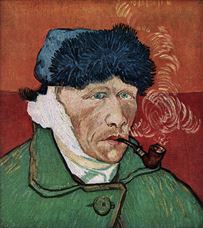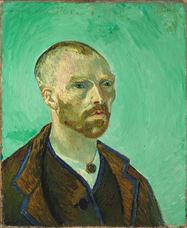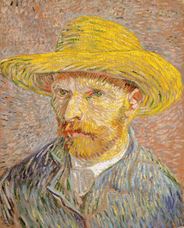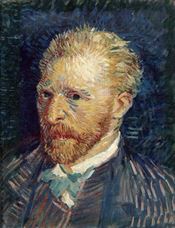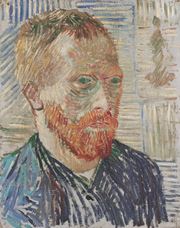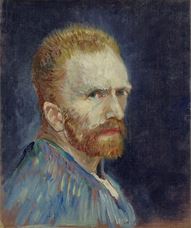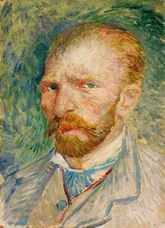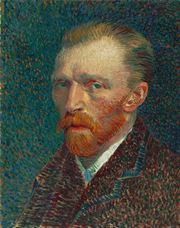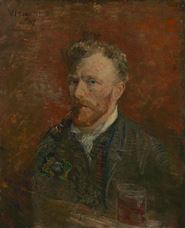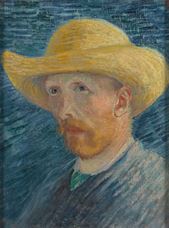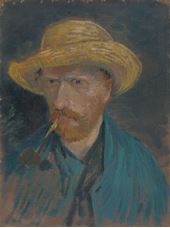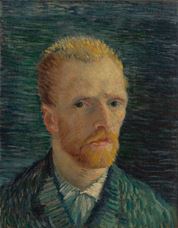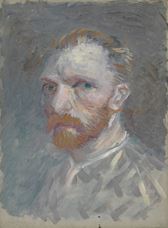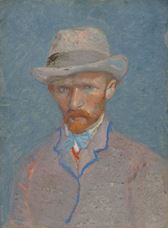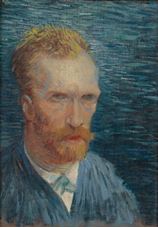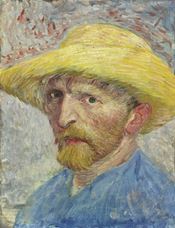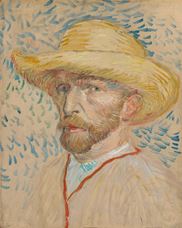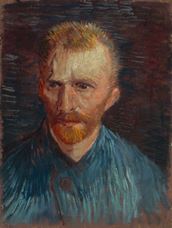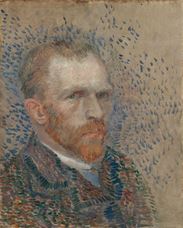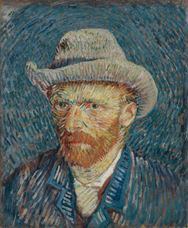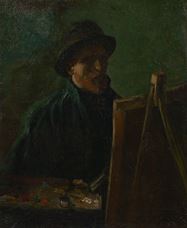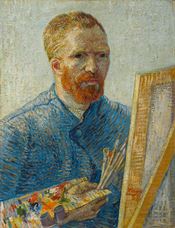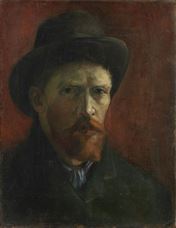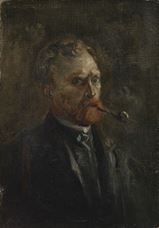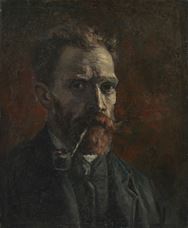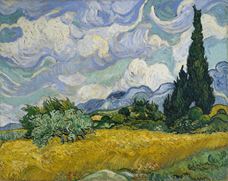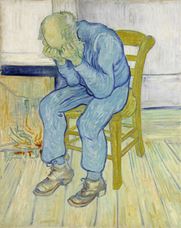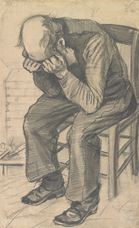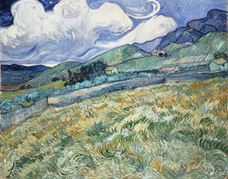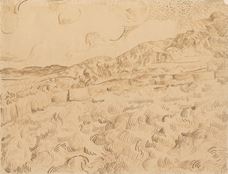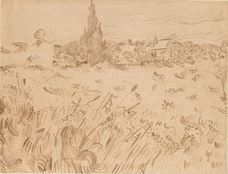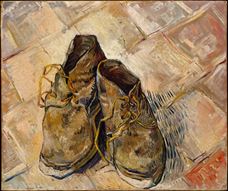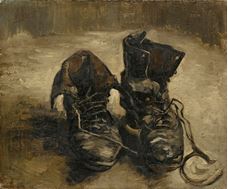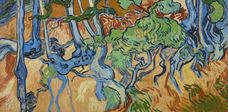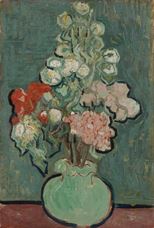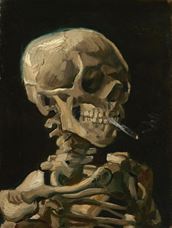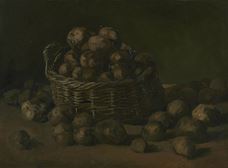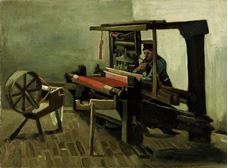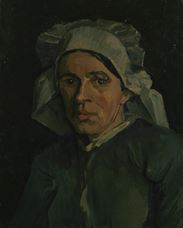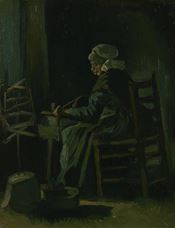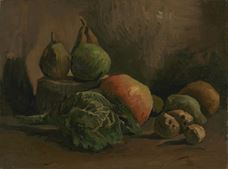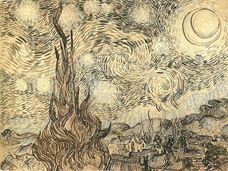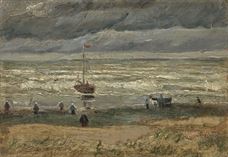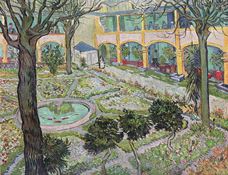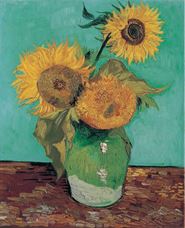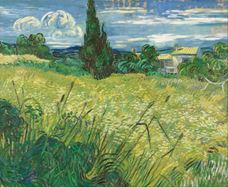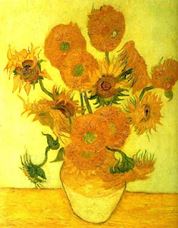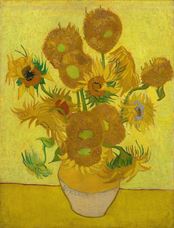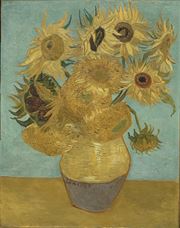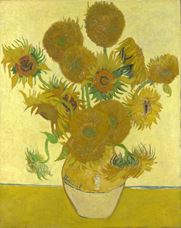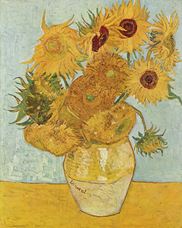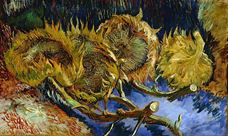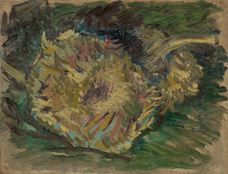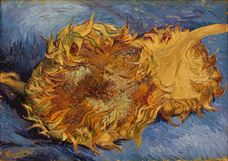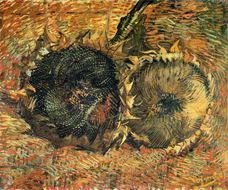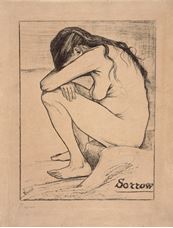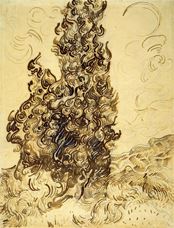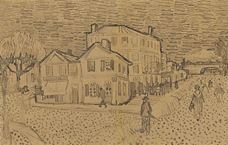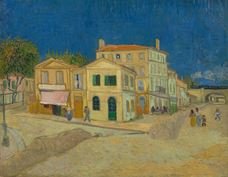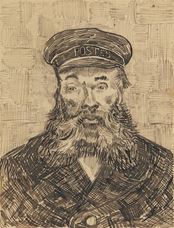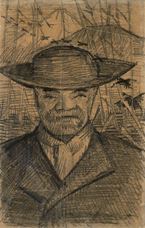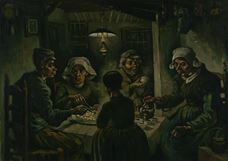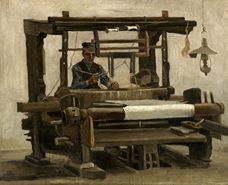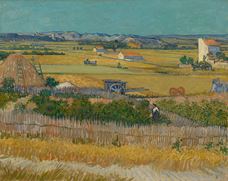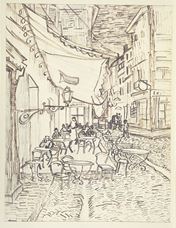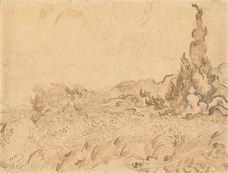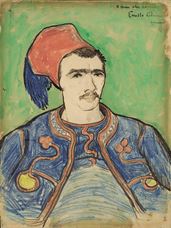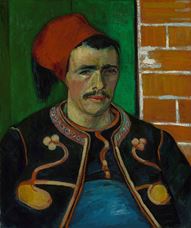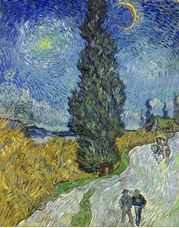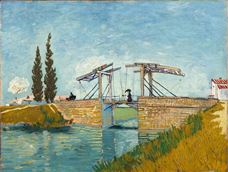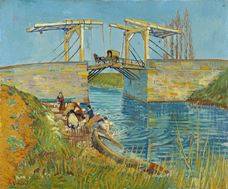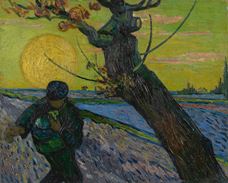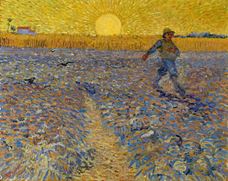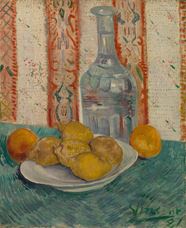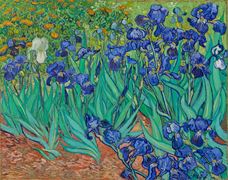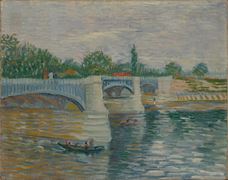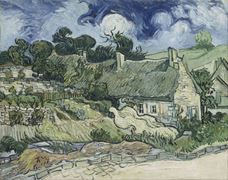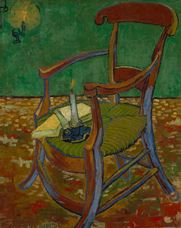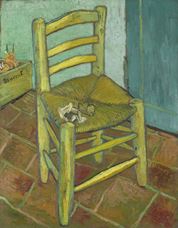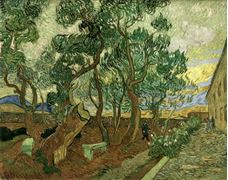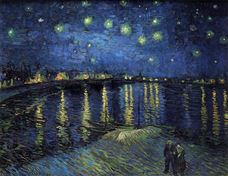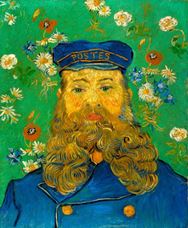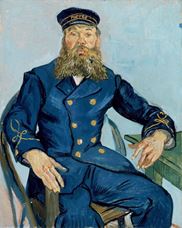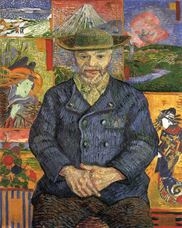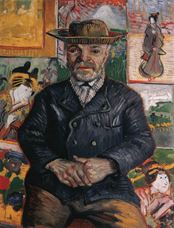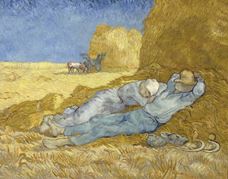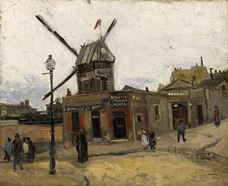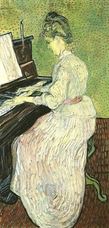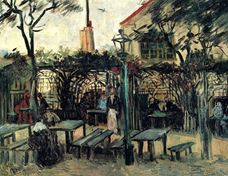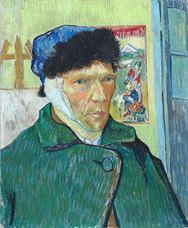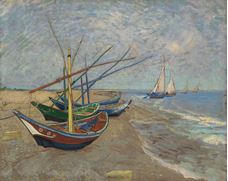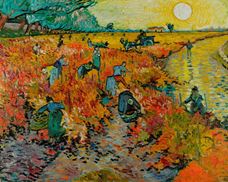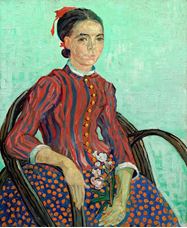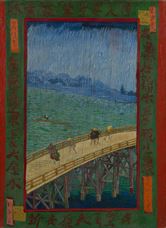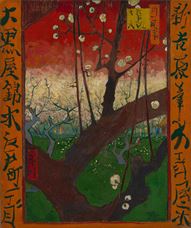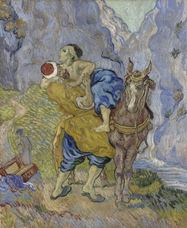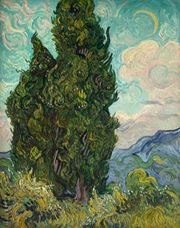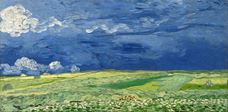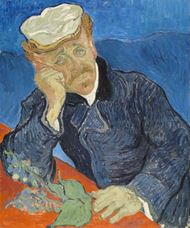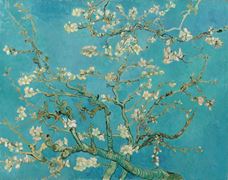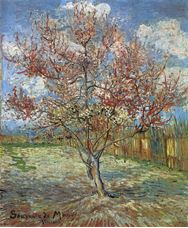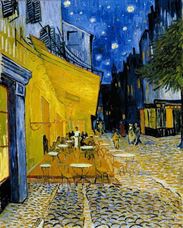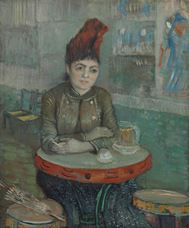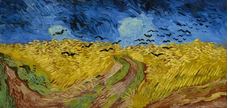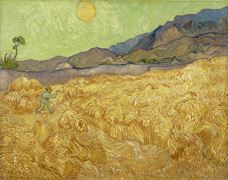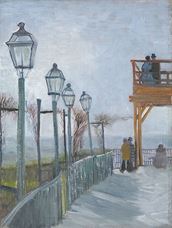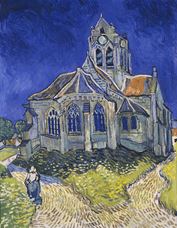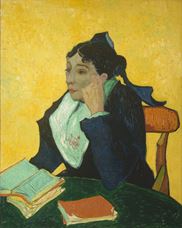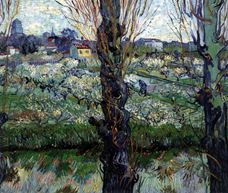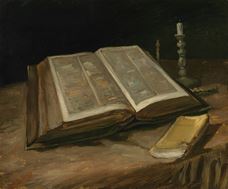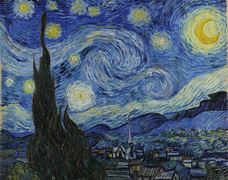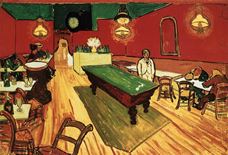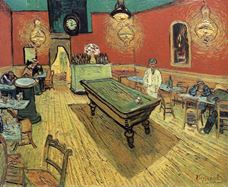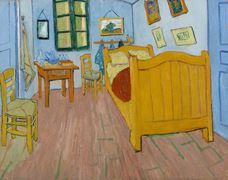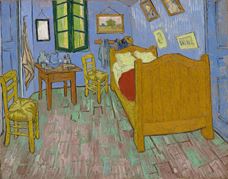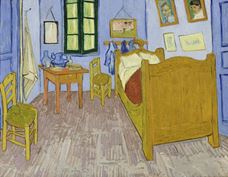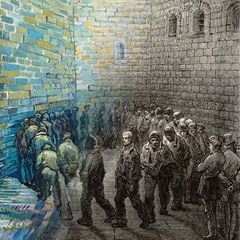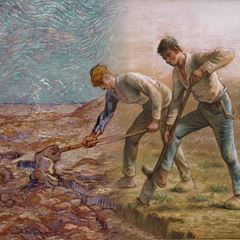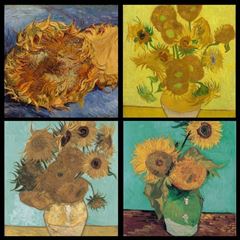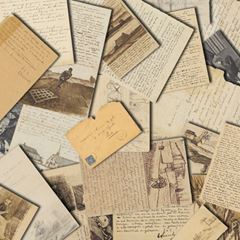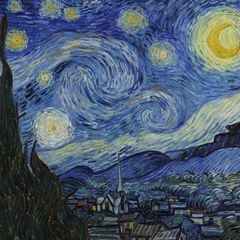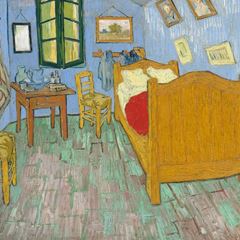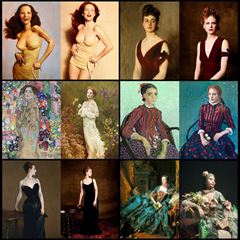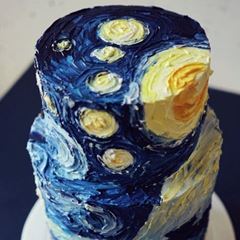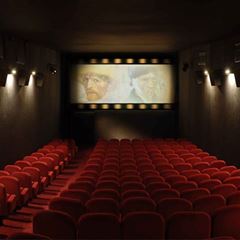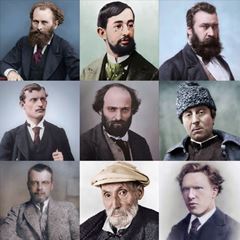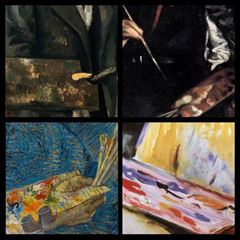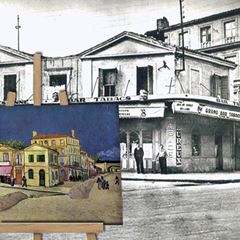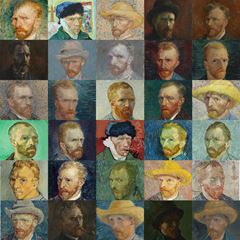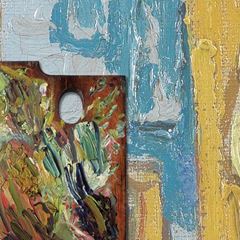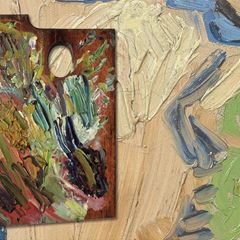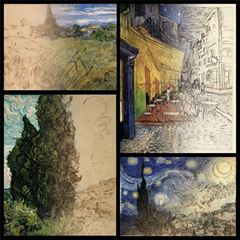The most well-known paintings in the history of art have been reconsidered from a different point of view. Famous paintings of world-renowned painters have been reinterpreted by a photo shoot with Nicole Kidman, Julianne Moore, Jessica Chastain, Naomi Campbell, Laetitia Casta, and Nicki Minaj. Photo shoots for Johannes Vermeer, John Singer Sargent, François Boucher, Gustav Klimt, René Magritte ...
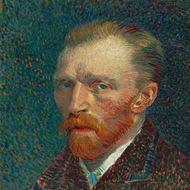
Vincent van Gogh
Vincent Willem van Gogh was born on 30 March 1853 in the town of Groot Zundert in the Netherlands. He was the first of six children of district pastor Theodorus van Gogh and Anna Cornelia. He was named after his stillborn brother who died one year before Van Gogh was born. Therefore, throughout his childhood, he felt like he was replacing someone else in a lost state. As for the reading age, Groot Zundert was enrolled in the village school and then at the boarding school in Zevenbergen. He moved to Tilburg as a boarding student for the secondary school. In 1868, he dropped out of his studies and returned to Groot Zundert.
In 1869 he began working, through his uncle Cent, at the Paris-based art dealer Goupil company's branch in The Hague. Here he was selling the reproductions of artworks and, in his free time, visiting the museums of the city. In 1873, his firm transferred him to Brussels and London galleries of the company. By working in London for a year made his first drawings. He fell in love with Ursula Layer, the daughter of landlady. Ursula's failure to respond caused him to suffer from sorrow. His life in London had introverted, spent irrelevant to his work and by reading many religious topics. In 1875, he was appointed to the Paris branch of Goupil. Continuing his indifference to the work opened the gap with the employer and left Goupil in 1876.
He worked as a substitute teacher at Ramsgate, near London, and at Isleworth, a neighborhood of Londoner workers. Because of his inclination towards religion, he resigned from teaching and worked as a volunteer preacher and teacher alongside a methodist priest. He was determined to devote himself to recovery from the poor people. Rain, mud, snow for months of continuous work, both mentally and physically caused the disease. In 1876 in Noel, he went to his family in Etten. He worked at a bookstore in Dordrecht for a few months. As he wanted a religion-related profession, he went to Amsterdam to study theology. He stayed with his uncle Johannes and began preparing for the university entrance exams but gave up and returned to his family.
In 1878 he spent three months at the Flemish Christian School in Brussels. He went to Borinage, a mining region near Belgium's France border to make a priesthood. He started to work as a preacher among the coal mine workers. He was living in poverty, visiting patients and reading the Bible chapters to the miners. In 1879, he continued to work as a preacher in Wasmes in the same area, and to pursue the same life. When he was dismissed on the grounds that he was not suitable for the profession of preaching, he passed to Cuesmes, a mining region, and started to volunteer as a preacher. Although he lived in poverty, he was trying to help the poor and the patients. He was reading a lot and his interest in painting increased day by day. But this intense tempo caused his illness. He had to leave the mission and go back to his family.
In 1880 he made many paintings of miners and the environment in which they lived. He decided to move on as a painter. His brother Theo, working in Goupil, and Anton Mauve, his cousin in The Hague with support moved to Brussels to take courses in anatomy and perspective at the Academy of Arts. Here he met the Dutch painter Anton van Rappard and formed a friendship. First studies detail sketches and the drawings were inspired by he found himself close to Jean François Millet.
The Netherlands
In 1881, he returned to his family. He fell in love with his cousin Kee Vos-Stricker, who was a widow. This unrequited love would be the beginning of deep pain. He had burned his hand in a lamp-of-flames to prove his passion for Kee to his family. Refusing to give up Kee, the perseverance intensified dispute with his family and caused him to leave his family once more.
Moved to The Hague in November 1881. In the early months of 1882, he began living in the same neighborhood as his painter cousin Mauve. He was studying painting techniques from Mauve. After a few months of working together, they broke down. During this period, he met with Clasina Maria “Sien” Hoornik. Sien was living with her five-year-old daughter and was pregnant. He took her home and started living together. Van Gogh also took care of the newborn son of Sien. His family and friends opposed this relationship and were constantly pressuring to leave. He left Sien, where he lived together for a year with Theo's suggestions.
After leaving The Hague for a few months in Drente in the north of the Netherlands, in December 1883 he returned to the family in Nuenen, where he would be spent two years. His parents had kept a workshop close to their home in order to support him. He became involved in a relationship with his neighbor Margot Begemann. This love adventure ended because of the opposition of the two families and the attempted suicide of the girl. During this period, he made up to 200 paintings, which were often dominated by dark colors. He had worked on peasants, weavers, and landscapes.
In May of 1885, Van Gogh made his painting "The Potato Eaters", which represented his early works and was considered the masterpiece of the Dutch period. The same year, He was shocked by his father Theodorus van Gogh's death. He moved to Antwerp in November due to the difficulty of living conditions in Nuenen. He kept a small attic with the help of his brother Theo. During this period he visited museums and impressed by the works of Peter Paul Rubens, the great master of baroque art. He discovered the Japanese woodcuts which paved the way for the ornamental, multi-colored style that would be seen in his later paintings. Although he was enrolled in the Fine Arts School, he left in a short period of time because he could not comply with academic teaching methods.
-Paris-
In February 1886 went to Paris. For two years until 1888, he lived with his brother Theo. Painter Fernand Cormon's workshop began to receive training. He walked away during the training he saw here from a worker, peasant subjects in the early period paintings. His friendship with Henri de Toulouse-Lautrec and Emile Bernard began in this workshop. During this period in Paris, the first steps of new impressionism had taken while impressionism was the last period. Van Gogh, through the Theo, Paul Gauguin, master of Impressionism, Camille Pissarro and other Impressionists; He met with Georges Seurat and Paul Signac, the masters of the Puantilist style. He had become close friends with Signac and had made paintings influenced by the Puantilist style. During this period, he generally worked on the flower subjects in the vase and concentrated on the portrait. Portrait of ”Père Tanguy, inspired by the Japanese woodcutters, was a work that could be considered a symbol of the Paris period. The colors in his palette have started to revive, the use of colors and brush domination were now indicative of his original identity.
-Arles-
After two years in Paris, Van Gogh moved to Arles in southern France on February 20, 1888. He rented a room in the Carrel Hotel-Restaurant where he would stay for three months. He was full of new hopes. His interest in the Far East culture increased and he began to paint flowers and trees that resembled Japanese landscapes. He often made two separate paintings of the Langlois Bridge by going to the southernmost channel of Arles.
In May he moved to a room on the top floor of the Café de la Gare. At the same time, he rented the four-roomed Yellow House in the Lamartine Area and started using it as a workshop.
In June, after a week's excursion to the village of Saintes Marie de la Mer, he began working over boats.
During the month of August, the Sunflowers theme appearing in his paintings in Paris made his works matured to reveal his masterpieces.
In September, he moved to Yellow House, where he had long dreamed of being a meeting place for artists. He also started painting outdoors at night.
In October 1888 Paul Gauguin, a painter friend of his, admired for his art, came to Arles through Theo. The two artists merged with the idea of creating a community of painters. From time to time during the time they spent together, they turned to the same issues, at which point the difference in their interpretation of their visual experiences became even more pronounced. It didn't take long for them to start working together. Paul Gauguin and the two-month relationship ended in December when Van Gogh cut his left ear as a result of the crisis. Gauguin left Arles. Van Gogh spent several weeks in the hospital. In January 1889 he returned "Yellow House".
In February, he had to return to the hospital because of insomnia, recurrent delusions, poisoning paranoia. It was decided to close the hospital with the signatures of the people of Arles. At the same time, Van Gogh was concerned that Theo was about to get married in Paris. He continued to paint to be purified from the troubles he had in the hospital. The paintings of Arles, where color and thick paint were used, were almost completely color. He had created new color sequences, he was working with spatula, fingers or paint tube.
-Saint Rémy-
On May 8, 1889, Vincent was 36 years old, and he had voluntarily entered himself at Saint Rémy's Saint-Paul-de-Mausole asylum, 25 kilometers from Arles. All his hopes for the future, all his plans were broken down. His brother Theo kept two rooms in the hospital, one for the bedroom and one for the studio. He was allowed to paint under the supervision of in charge of the ward, and during this period he mostly made landscape paintings. He discovered real motion in his paintings; it was seen that he gave importance to rhythm and movement rather than color. He was combining the sky and the earth as a whole. He used these features together in his masterpiece "The Starry Night", one of the most important and unusual paintings he made in June. At the end of 1889, when he could not go out into the open air or paint, he was either completing his unfinished paintings or making copies of the works of his own paintings or other painters.
In January and February of 1890, he had been very excited about some events. Theo's son was born and had given him the name of Vincent. In addition, in an art magazine, for the first time, a positive and comprehensive article was published about Van Gogh. In Brussels, he had a severe seizure immediately following the news that the "Red Vineyard" was sold.
-Auvers Sur Oise-
After his health improved slightly, he decided to leave the hospital where he had spent nearly a year. He went to Paris to see his brother and family and stayed there for a short while, in May 1890, he moved to Auvers Sur Oise, near Paris. He rented a room at Ravoux Guesthouse. Here Gachet, a medical doctor and amateur painter, kept an eye on Van Gogh. In a short period of time, a close friendship was established. Meanwhile, he continued to work intensively. Within two months, he painted over eighty paintings, including masterpieces in "The Church at Auvers" and "Dr. Paul Gachet". In these pictures, the starting point was more rhythm than color. The obvious brush strokes in all of his paintings were also present in these studies. Moving line, helices, circles were again attracted attention.
Vincent's happy period didn't last long. Van Gogh needed the financial and moral support of his brother, Theo, in order to survive. But his brother Theo was having big problems. Vincent was very sad about this and went to Paris to visit his brother in July. He was was a bad relationship with Gachet. His relationship with the entire environment was worsening; the hope of working has vanished which had connected him to live so far. Shortly before his death, he painted "Wheatfield with Crows" reflecting the mood of those days.
Van Gogh shot himself in the chest on July 27, and had returned home late and was locked up in his room. Van Gogh died two days later on July 29, 1890, even though his brother Theo came to the news.
Bibliography;
Gombrich, E.H., (2002). Sanatın Öyküsü, Üçüncü Baskı, Remzi Kitabevi, İstanbul.
Farthing, S., (2014). Sanatın Tüm Öyküsü, İkinci Baskı, Hayalperest Yayınevi, İstanbul.
Turani, A., (2010). Dünya Sanat Tarihi, On Dördüncü Baskı, Remzi Kitabevi, İstanbul.
Güvemli, S., (2005). Sanat Tarihi, Dördüncü Baskı, Varlık Yayınları, İstanbul.
Altuna, S., (2013). Ünlü Ressamlar Hayatları ve Eserleri, Birinci Baskı, Hayalperest Yayınevi, İstanbul.
Lunday, E., (2013). Büyük Sanatçıların Gizli Hayatları, Beşinci Baskı, Domingo Yayınevi, İstanbul.
Yetkin, S.K., (2007). Büyük Ressamlar, Birinci Baskı, Palme Yayıncılık, Ankara.
Walther, I.F., (2005). Van Gogh, Birinci Basım, Taschen/Remzi Kitabevi, İstanbul.
Çev: Kür, P., (2006). Theo'ya Mektuplar, Dördüncü Baskı, Yapı Kredi Yayınları, İstanbul.
Spence, D., (2015). Büyük Ressamlar Van Gogh, Üçüncü Baskı, Beta Yayınları, İstanbul. Eroğlu, Ö., (2014). Üç Postempresyonist Ruh Cézanne-Van Gogh-Gauguin, Birinci Baskı, Tekhne Yayınlar, İstanbul.
1853 He was born on March 30th in the town of Groot Zundert in Northern Brabant, the Netherlands.
1857 His brother Theodorus (Theo) was born.
1861-1864 He studied at the village school in Zundert.
1864 he enrolled in a private boarding school in Zevenbergen.
1866-1868 He studied at a boarding school in Tilburg.
1868 He dropped out of school and went back to Groot-Zundert.
1869 On July 30, he entered the painting company Goupil and Associates in The Hague.
1871 His father was appointed as a priest to Helvoirt in Brabant and moved there with his family.
1872 He spent the holiday with his parents. His intimate correspondence with his brother Theo began during this period.
1873 In January, Goupil's gallery in Brussels; was sent to his gallery in London in May. In June he fell in love with the landlord's daughter Ursula.
1874 He spent the summer holiday in Helvoirt with his family. He returned to London in mid-July.
1875 In May he was appointed to Paris. In October his father, Theodorus, was appointed to Etten near Breda.
1876 In April, he left Goupil. He started to work as a substitute teacher at Ramsgate, near London. Between July and December, he continued to work as a substitute teacher at Isleworth. He then served as a volunteer preacher and teacher alongside a Methodist preacher. At Christmas, he went back to his family in Etten.
1877 Between January and April he worked in a bookstore in Dordrecht. In May he went to Amsterdam to prepare for the entrance examination of the School of Theology.
1878 In July, he quit working for exams and went to the Religious School (Evangelical School) in Brussels. In December, he went to Borinage, a mining region near the French border, in order to become a priest.
1879 In January, he found work as a temporary preacher in Wasmes for six months. In July, he was dismissed on the grounds that he was not suitable for the profession of a preacher. He continued to work on his account at Cuesmes. He read a lot, he painted, his interest in painting increased more and more every day.
1880 Between July and August, he decided to work as a painter and started to drew mine workers. In October, he went to Brussels to take anatomy and perspective classes at the Academy of Arts. In November, he met Dutch painter Rappard.
1881 in April, he returned to his family in Etten. His cousin Kate (Kee) and Vos-Stricker, who lost her husband had a desperate heartfelt relationship. In December, he settled in The Hague. He took painting lessons from Anton Mauve, one of the successful artists of The Hague School.
1882 In January he met Clasina Maria Hoornik (Sien), a street woman. In the summer, his family moved to Neunen, where his father was appointed a priest. Autumn landscape paintings, made of nature drawings. In winter, he dealt with various drawings and portraits. He made portraits of Sien and his newborn child, the elderly in the nursing home.
1883 Between September and November, he decided to leave Sien. He went to Drente, a provincial town in the north. He stayed with his family in December in Nuenen.
1884 Rappard came to see him. Both families were strongly opposed to their relationship with the neighbor's daughter, Margot. Margot tried to commit suicide. He worked on working villagers, weavers and landscape subjects.
1885 In March, his father Theodorus died. Between April and May, he completed the Potato Eaters, the principal work of the Dutch period. He sent lithography of the work to Rappard. Rappard's negative criticism of the painting ended their friendship. In November he moved to Antwerp. He visited the museums and was most impressed by Rubens. While visiting the city, he saw and bought Japanese wooden prints.
1886 In February he went to Paris. He lived with Theo in Rue de Laval. He started working at the Carmon Workshop. In June, he moved to Montmartre, 54 Rue Lepic, with Theo. In February he went to Paris. He lived with Theo in Rue de Laval. He started working at the Carmon workshop. In June, he moved to Montmartre, 54 Rue Lepic, with Theo.
1888 In February he left Paris for Arles. There, he settled in a room at the restaurant called Carrel. In March, he began to paint flowers and trees resembling Japanese landscapes. In May, he rented the Yellow House in the Lamartine Area. In June, he worked on boats after his visit to Saintes-Marie-de-la-Mer. In August he made friends with the town's postman, Joseph Roulin, and portrayed him. A series of sunflowers made the picture. In September, he moved to Yellow House. In October, Gauguin came to Arles. In December, Theo announced that he would be engaged to Johanna Bonger. December 23, suffered a spiritual depression and cut off his ear. He spent two weeks in the hospital.
1889 He returned home from the hospital in January. After a short time, he started working again. He made two self-portraits in his bandaged ears. In February, he had to return to the hospital because of insomnia and recurrent delusions. In March, he had to return to the hospital again. In April, Theo married Johanna Bogner. In May he voluntarily went to a mental hospital in Saint Rémy’ Saint-Paul-de-Mausole near Provence. At the end of June, he started making cypress paintings. He had a severe seizure in December.
1890 In January, an article was published in the magazine Mercure de France, by praising works of Vincent by Albert Aurier. Theo's son was born, and his name was Vincent Willem. In February he dedicated his nephew to Blossoming Almond Tree. In March, the painting Red Vineyard was sold in Brussels. When his health improved in May, he went to Paris to see Theo's family. In May he moved to Auvers-Sur-Oise near Paris. In June he painted The Church at Auvers. He made large-scale paintings of fields stretching under a stormy sky in July. He wrote his last letter on the 23rd. On July 27, he shot himself with a gun and died on July 29th. He was buried in the cemetery in Auvers.
Copy Works - Vincent van Gogh
Copies of the works of famous painters by Vincent van Gogh between 1887 and 1890 constitute an important place in his art.
These works were neither copies nor a version of the originals. It was an important part of the artist's own collection. Van Gogh's difficulty in finding a model and staying closed in the clinic caused him to tendency to this area.
Copy Works - Vincent van Gogh
Copies of the works of famous painters by Vincent van Gogh between 1887 and 1890 constitute an important place in his art. Using the black-and-white lithography, reproductions and wooden prints of his brother Theo sent to him from Paris, transformed the paintings of painters such as Rembrandt van Rijn (1606-1669), Eugène Delacroix (1798-1863) and Jean-François Millet (1814-1875) into colorful paintings.
Van Gogh explains the purpose of the copies in his letters to his brother Theo:
“I can assure you that it interests me enormously to make copies, and that not having any models for the moment it will ensure, however, that I don’t lose sight of the figure.”
Sunflowers - Vincent van Gogh
Sunflowers are one of Vincent van Gogh's most famous works. In the late 1880s, Van Gogh began to produce a series of dazzling sunflowers. Sunflowers become one of his favorite themes, one of which he often works with.
Letters from Van Gogh to Theo
Vincent van Gogh, who took the name of his brother who died before he was born, has experienced psychological problems in his inner world, his works have not gained value during his life, he struggled with economic difficulties.In such troubled situations, the only person who had tied him to live was his brother, Theo.
The Starry Night - Vincent van Gogh
In February 1888 Vincent van Gogh moved to the city of Arles in southern France. Gauguin, a painting friend of his, had been living in the house since September. During this period, he usually made landscape paintings and was totally focused on nature. "The Starry Night" masterpiece was one of the few paints of Van Gogh's direct imagination, which did not originate from the depiction of nature.
Bedroom in Arles - Vincent van Gogh
"My eyes are still tired, but anyway I had a new idea in mind, and here’s the croquis of it. No. 30 canvas once again. This time it’s simply my bedroom." After two years in Paris, Vincent van Gogh moved to Arles in southern France on February 20, 1888. He rented a room in the Carrel Hotel-Restaurant where he would stay for three months...
Paintings from Cake
Nastasya Chernogrivova, the founder and master of the cake of Marfa Patisserie in Saint-Petersburg, Russia, makes cakes with interesting cakes. Combining his delicious cakes and pastries with world-famous works of art, Dali creates cakes with paintings by famous painters such as Degas, Monet, Klimt and Van Gogh.
Nastasya Chernogrivova, by making all of the cakes on the order to make designs every time again. She shares her unique and unique cake designs from her instagram account "marfa_torts".
Actors Who Give Life to Van Gogh in Cinema
Vincent van Gogh, a Dutch art impressionist, is one of the most renowned and influential figures in the history of the Western world. Van Gogh suffered traumatic episodes during his life. He ended his life by committing suicide due to these troubles. The life of the painter who has such a troubled life has been the subject of many films, documentaries and series.
Colorized Photos of Painters
On Tumblr.com, a user named "Paintters.co" colorized a lot of the black-white photos of world-famous painters. Examples of this photographic works...
Most Searched Painters on Google in 2020!
Social media and blogger named Gareth EVANS wanted to find out which artists were most searched on google in 2020 in the world during the pandemic process. EVANS showed the most popular artists searched by each country on the world map.
Pallet Self-Portraits of Painters
Self-portraits, which reflect the artist's appearance, personality and mood, bear the characteristics of the environment in which they are made and the environment in which the artist lives. Rembrandt, Van Gogh, Picasso, Munch and Otto Dix have made many self-portraits of famous painters. Each of these self-portraits used unique lines. The connection between the painters' palettes and paintings, the paint on the pallets reveal their personal style and techniques.
Reflections - Vincent van Gogh
His artistic talent was only noticeable after his death. Vincent van Gogh (1853-1890), who was not known at the time, gained great value in the process of change in art with his life and works. He started painting at the age of twenty-six and lost his life in thirty-seven. In the ten years of his artistic life, he left many works that many artists could not fit even in a century of life.
Self-Portraits - Vincent van Gogh
Vincent van Gogh (1853-1890), who spent his thirty-seven years in a very different psychological situation, had faltered especially in the face of disappointment. He devoted himself to his art, his art and life had become an inseparable whole. His self-portraits reflected what he experienced in his soul.
Vincent van Gogh: Brush Touches
Vincent van Gogh's "Wheat Field with Cypresses", "The Yellow House" and "The Harvest" the details of the paintings, color transitions and brush touches;
Vincent van Gogh: Brush Touches
Vincent van Gogh's life and art were intertwined. His paintings were reflections of her life on the canvas. The atmosphere in his first paintings was dark until he went to Paris. The two years he spent in Paris was the best he had ever felt. The colors on his palette were coming to life. The use of color and brush domination began to reflect his personality. In his paintings in Arles, the use of color and thick paint intensified. She had delivered her paintings almost completely to color. He just didn't confine oneself to a brush. The spatula was creating new color sequences with its fingers or paint tube. In the later periods, it was seen that he found importance in rhythm and movement rather than color by discovering real motion.
Drawings and Paintings - Vincent van Gogh
Vincent van Gogh (1853-1890), the Dutch post-impressionist famous painter, had painted only in the last decade of his thirty-seven years of life. Among the most famous paintings drawings and oil paintings of the same theme;













